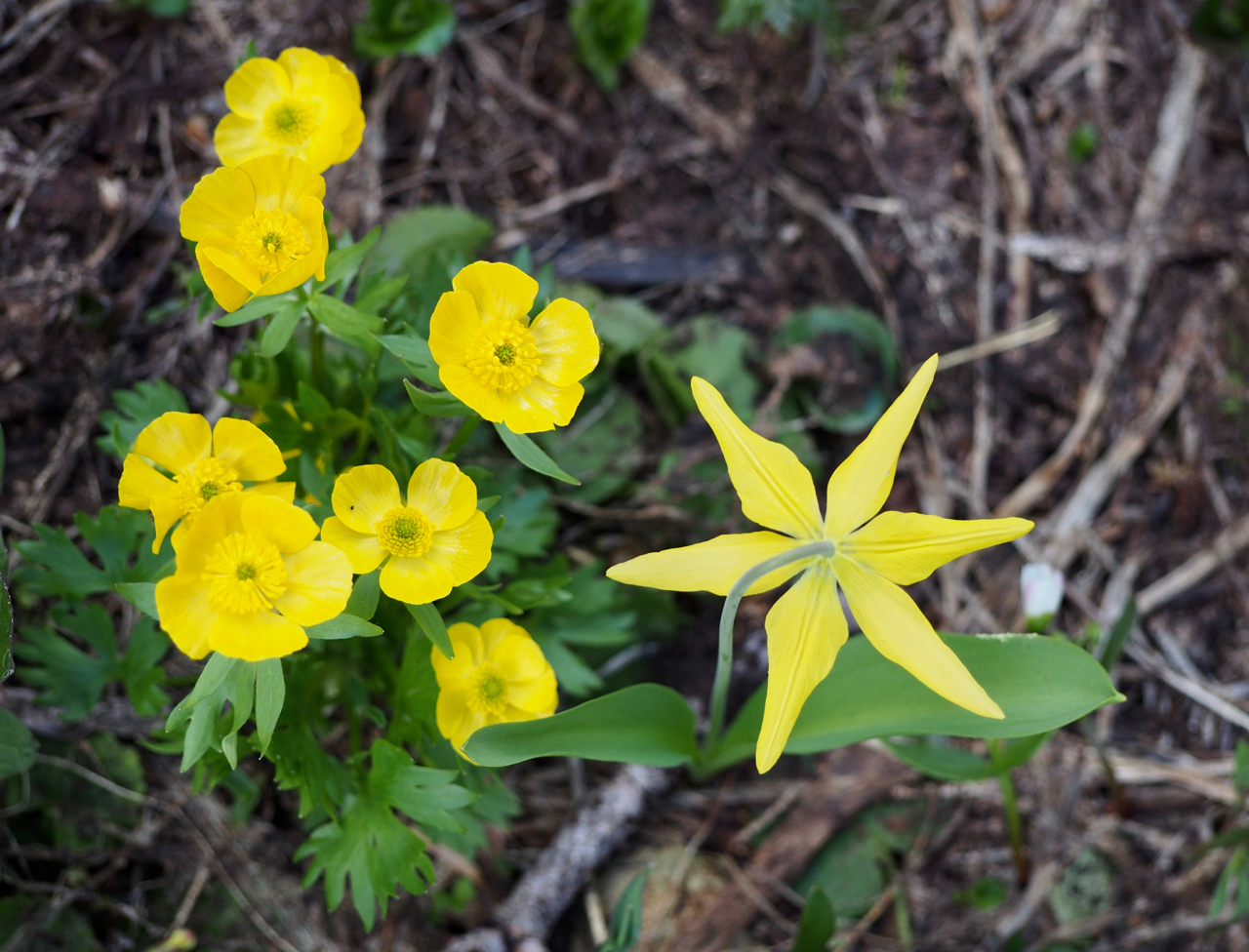 Members of the Natural History Society joined for a summer hike on July 11, 2017 to Hurricane Ridge with native plant buffs, Coca Sanchez and Dana Ecelberger. Coca and Dana are local landscapers, Rare Care volunteers, and graduates of the Land Trust’s first Northwest Naturalist course.
Members of the Natural History Society joined for a summer hike on July 11, 2017 to Hurricane Ridge with native plant buffs, Coca Sanchez and Dana Ecelberger. Coca and Dana are local landscapers, Rare Care volunteers, and graduates of the Land Trust’s first Northwest Naturalist course.
We carpooled from Port Townsend to Hurricane Ridge. From there we hiked the Roaring Winds/Obstruction Point Trail, a 6.4-mile round-trip hike with 1,400 feet of elevation gain. Dogs were not allowed, per the National Park rules.
Obstruction Point Trail is the highest trail in the Park, passing through alpine country and great viewsheds. We expected to see early season wildflowers, such as Glacier Lily, Phlox, Frittilarias, and orchids.
 We recommended: layers for temperature fluctuations, plenty of food and water, field guides, binoculars, hand lenses, hiking boots, hats, and hiking poles. A group of 12 or less was preferred, but we did not turn anyone away.
We recommended: layers for temperature fluctuations, plenty of food and water, field guides, binoculars, hand lenses, hiking boots, hats, and hiking poles. A group of 12 or less was preferred, but we did not turn anyone away.
Lee at JLTnatural@saveland.org provided details.


 While the trail continues another two miles, we stopped here. This is our lunch spot
While the trail continues another two miles, we stopped here. This is our lunch spot
 On May 17, 2017, Jeanmarie Morell led a hike for the Natural History Society, at
On May 17, 2017, Jeanmarie Morell led a hike for the Natural History Society, at  Participation was not limited, and carpools were arranged. We suggested wearing light hiking boots and dressing in layers for changing weather, and bringing field guides, binoculars, and plenty of food and water.
Participation was not limited, and carpools were arranged. We suggested wearing light hiking boots and dressing in layers for changing weather, and bringing field guides, binoculars, and plenty of food and water.